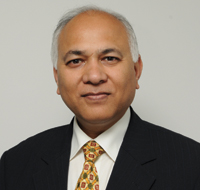
INDIA has shown incredible growth in visitors over the past couple of years, and the Arab region has specifically displayed a considerable climb.
“We have seen a significant growth in visitor numbers to India. For 2011, we saw more than 285,000 Arab travellers visiting India, a growth of more than 23 per cent from the previous year. This is a very positive observation, considering the instability the region faced during that period. Trends for 2012 was also very similar. UAE visitors showed one of the maximum growths of 46 per cent with 72,000 visitors, second only to Myanmar. The emirate has hence emerged as one of the most important tourism generating markets for India,” explains Vikas Rustagi, regional director, West Asia & Africa.
The Indian tourism industry, the largest service industry contributing/generating a total employment of 8.78 per cent and contributing 6.23 per cent to the country’s GDP, registered a growth at the rate of 8.9 per cent in 2011. More than 6.29 million foreign tourists visited India in 2011 and the foreign exchange earnings from tourism during this period were marked at $16.6 billion, up 16.7 per cent from the previous year’s $14.19 billion. The same year, an overall growth of 9.2 per cent, far exceeding the World Tourism Organisation average annual growth recorded at five per cent. The figures for 2012 are still being collected.
Rustagi, who was the deputy director general with the Indian Ministry of Tourism and has worked in two of the department’s 14 oversees offices prior to moving to Dubai, explains that the Middle East region was one of the most interesting regions he has been at for a number of reasons. “Europe is a long-haul destination and the US is an extra-long haul destination where travellers need to plan six months to a year advance. But in the Middle East, one can plan a trip just a day in advance, if not the same day. Also up until the recent past, the West had adverse impressions while from this region people have a lot of awareness about India. Things have been changing since the past 10 years. People are now fed up of routine and with the advancement and reach of technology people are exploring more and looking towards the East.” He explains that the biggest factor to this was excellent air connectivity these days with more and more airlines offering convenient, non-stop flights to India. Globally, the US and UK hold the top positions in visitors while from the Middle East region, Iran and Saudi Arabia are the biggest contributors after the UAE.
 |
|
Rustagi |
While travellers conventionally choose the cooler months from October to March, travel agents are now being urged to promote monsoon packages for the Middle East travellers. “During the monsoons there is a lot of humidity which is good to practice Ayurveda and this offers a great de-stressing holiday. The eco diversity of India is welcoming making it a truly incredible destination. Visitors can everything here – islands, forts, beaches, mountains, forests, deserts, backwaters and more. Hence we promote India as a whole. There can never be a ‘first time’ to India and it takes repeated visits to experience the country. India is addictive, it is intoxicating.”
Rustagi says that while the Western travellers prefer roughing it out to explore the country, the Arab prefer a totally arranged holiday. He says: “We are promoting a series of new packages including the monsoon, luxury trains, luxury palaces of Rajasthan, the hills and mountain ranges of Jammu and Kashmir, UP and Himachal Pradesh, the tea gardens of Maharashtra and so on where they can be pampered in luxury as well as experience wildlife. The beauty of India is that it is a destination for 365-days a year. Anytime of the year some part of India is looking for you. Whether it is golf, shopping, food, Ayurveda, yoga, nature or cuisine there is something for everyone – of all ages. It is also a destination that promotes pilgrimage or religious tourism especially for Muslims. India has the second highest population of Muslims in the world. Indians understand the Islamic heritage and customs and so it is easy to communicate with visitors from this region.”
In order to continue encouraging the growing number of visitors to the country, the government has also relaxed visa laws. Rustagi says: “We now have collective landing permits where visas can be applied online through government approved travel agents 72 hours prior to a trip. Guests, of up to four and above, can register with the foreign regional registration office (FRRO) on the Indian consulate website.”
The tourism office is now focusing on CIS (Commonwealth of Independent States including Armenia, Azerbaijan, Belarus, Kazakhstan, Kyrgyzstan, Moldova, Russia, Tajikistan and Uzbekistan) which Rustogi describes as being an emerging market consisting of both the high spenders as well as budget travellers. He adds: “We are also looking very keenly at the South American market including Brazil, Argentina and Mexico, which is showing growth because of better connectivity. Within the region, we are looking towards Saudi Arabia from where we are generating a lot of interest and in terms of medical tourism we have seen growth from Oman and Yemen.”
By Shilpa Chandran
